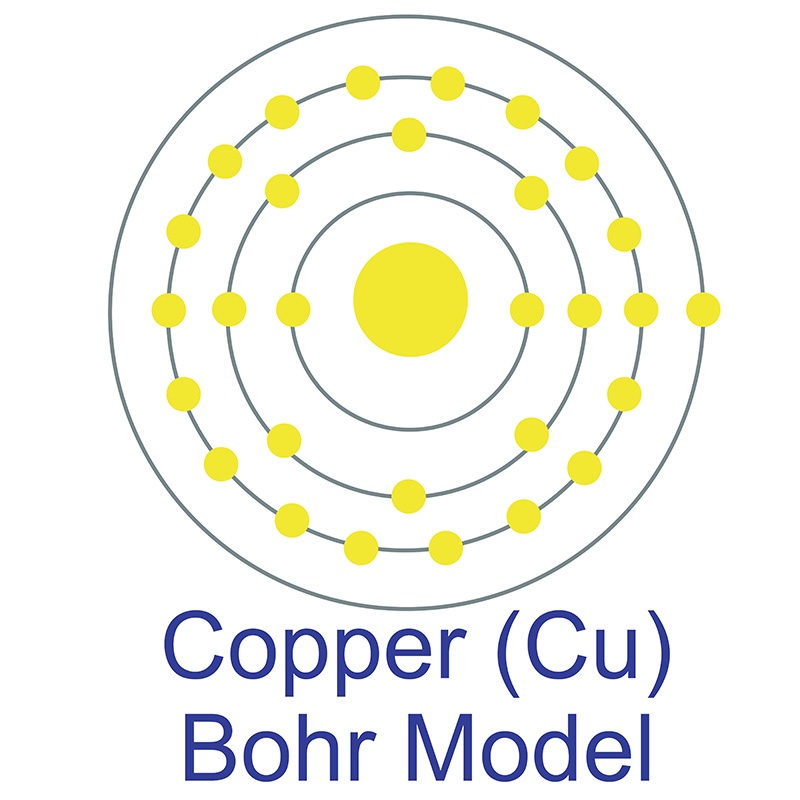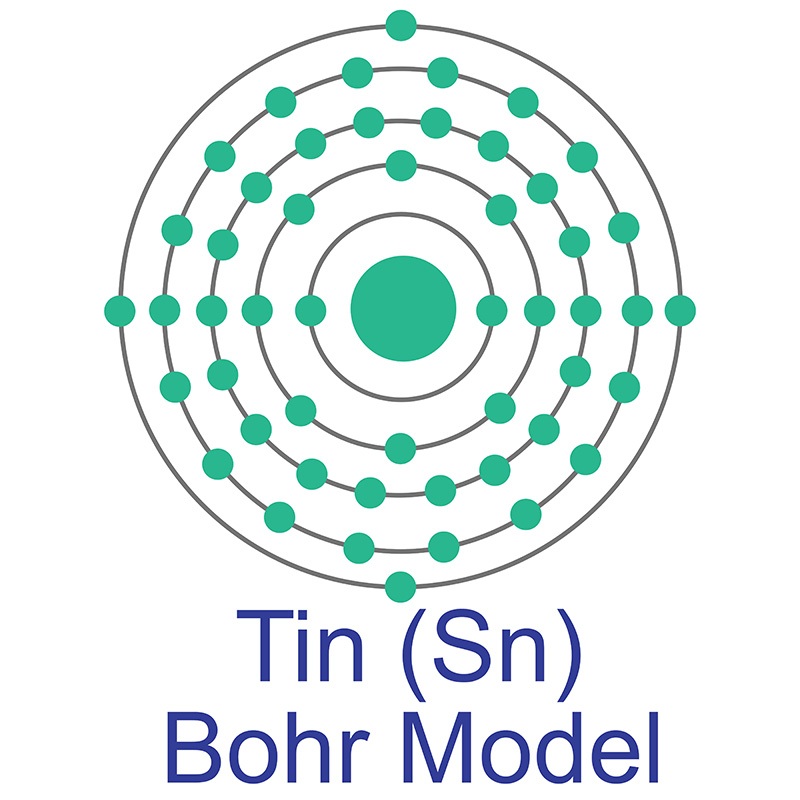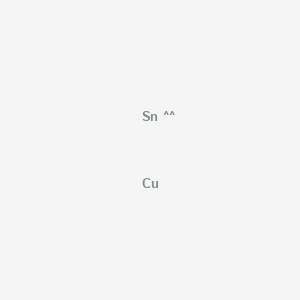SECTION 1. IDENTIFICATION
Product Name: Tin Copper Alloy
Product Number: All applicable American Elements product codes, e.g. SN-CU-01-P.03CU
, SN-CU-01-P.07CU
CAS #: 158113-12-3
Relevant identified uses of the substance: Scientific research and development
Supplier details:
American Elements
10884 Weyburn Ave.
Los Angeles, CA 90024
Tel: +1 310-208-0551
Fax: +1 310-208-0351
Emergency telephone number:
Domestic, North America: +1 800-424-9300
International: +1 703-527-3887
SECTION 2. HAZARDS IDENTIFICATION
2.1 Classification of the substance or mixture
GHS Classification in accordance with 29 CFR 1910 (OSHA HCS)
Combustible dust,
Acute aquatic toxicity (Category 1), H400
2.2 GHS Label elements, including precautionary statements
Pictogram
Signal word Warning
Hazard statement(s)
May form combustible dust concentrations in air
H400 Very toxic to aquatic life.
Precautionary statement(s)
P273 Avoid release to the environment.
P391 Collect spillage.
P501 Dispose of contents/ container to an approved waste disposal plant.
2.3 Hazards not otherwise classified (HNOC) or not covered by GHS
Combustible dust
SECTION 3. COMPOSITION/INFORMATION ON INGREDIENTS
3.2 Mixtures
Synonyms : Bronze
Sn5Cu84
Molecular weight : 182.26 g/mol
Hazardous components
Component Classification Concentration
Copper
CAS-No.
EC-No.
7440-50-8
231-159-6
Aquatic Acute 1; H400 >= 90 - <= 100
%
Tin
CAS-No.
EC-No.
7440-31-5
231-141-8
>= 10 - < 20 %
SECTION 4. FIRST AID MEASURES
4.1 Description of first aid measures
General advice
Consult a physician. Show this safety data sheet to the doctor in attendance.
If inhaled
If breathed in, move person into fresh air. If not breathing, give artificial respiration. Consult a physician.
In case of skin contact
Wash off with soap and plenty of water. Consult a physician.
In case of eye contact
Flush eyes with water as a precaution.
If swallowed
Never give anything by mouth to an unconscious person. Rinse mouth with water. Consult a physician.
4.2 Most important symptoms and effects, both acute and delayed
The most important known symptoms and effects are described in the labelling (see section 2.2) and/or in section 11
4.3 Indication of any immediate medical attention and special treatment needed
No data available
SECTION 5. FIREFIGHTING MEASURES
5.1 Extinguishing media
Suitable extinguishing media
Use water spray, alcohol-resistant foam, dry chemical or carbon dioxide.
5.2 Special hazards arising from the substance or mixture
Tin/tin oxides, Copper oxides
5.3 Advice for firefighters
Wear self-contained breathing apparatus for firefighting if necessary.
5.4 Further information
No data available
SECTION 6. ACCIDENTAL RELEASE MEASURES
6.1 Personal precautions, protective equipment and emergency procedures
Avoid dust formation. Avoid breathing Vapors, mist or gas. Ensure adequate ventilation. Evacuate personnel to safe
areas.
For personal protection see section 8.
6.2 Environmental precautions
Prevent further leakage or spillage if safe to do so. Do not let product enter drains. Discharge into the environment
must be avoided.
6.3 Methods and materials for containment and cleaning up
Pick up and arrange disposal without creating dust. Sweep up and shovel. Keep in suitable, closed containers for
disposal.
6.4 Reference to other sections
For disposal see section 13.
SECTION 7. HANDLING AND STORAGE
7.1 Precautions for safe handling
Further processing of solid materials may result in the formation of combustible dusts. The potential for combustible
dust formation should be taken into consideration before additional processing occurs.
Provide appropriate exhaust ventilation at places where dust is formed.
For precautions see section 2.2.
7.2 Conditions for safe storage, including any incompatibilities
Keep container tightly closed in a dry and well-ventilated place.
Keep in a dry place.
Storage class (TRGS 510): Non Combustible Solids
7.3 Specific end use(s)
Apart from the uses mentioned in section 1.2 no other specific uses are stipulated
SECTION 8. EXPOSURE CONTROLS/PERSONAL PROTECTION
8.1 Control parameters
Components with workplace control parameters
Component CAS-No. Value Control
parameters
Basis
Copper 7440-50-8 TWA 1.000000
mg/m3
USA. ACGIH Threshold Limit Values
(TLV)
Remarks Irritation
Gastrointestinal
metal fume fever
TWA 1.000000
mg/m3
USA. NIOSH Recommended
Exposure Limits
TWA 1.000000
mg/m3
USA. Occupational Exposure Limits
(OSHA) - Table Z-1 Limits for Air
Contaminants
TWA 0.200000
mg/m3
USA. ACGIH Threshold Limit Values
(TLV)
Irritation
Gastrointestinal
metal fume fever
TWA 0.100000
mg/m3
USA. Occupational Exposure Limits
(OSHA) - Table Z-1 Limits for Air
Contaminants
TWA 1.000000
mg/m3
USA. ACGIH Threshold Limit Values
(TLV)
Irritation
Gastrointestinal
metal fume fever
TWA 0.200000
mg/m3
USA. ACGIH Threshold Limit Values
(TLV)
Irritation
Gastrointestinal
metal fume fever
TWA 1.000000
mg/m3
USA. NIOSH Recommended
Exposure Limits
TWA 1.000000
mg/m3
USA. NIOSH Recommended
Exposure Limits
TWA 1.000000
mg/m3
USA. NIOSH Recommended
Exposure Limits
TWA 1.000000
mg/m3
USA. Occupational Exposure Limits
(OSHA) - Table Z-1 Limits for Air
Contaminants
TWA 0.100000
mg/m3
USA. Occupational Exposure Limits
(OSHA) - Table Z-1 Limits for Air
Contaminants
TWA 1 mg/m3 USA. ACGIH Threshold Limit Values
(TLV)
Irritation
Gastrointestinal
metal fume fever
TWA 0.2 mg/m3 USA. ACGIH Threshold Limit Values
(TLV)
Irritation
Gastrointestinal
metal fume fever
TWA 1 mg/m3 USA. NIOSH Recommended
Exposure Limits
TWA 1 mg/m3 USA. NIOSH Recommended
Exposure Limits
TWA 1 mg/m3 USA. Occupational Exposure Limits
(OSHA) - Table Z-1 Limits for Air
Contaminants
TWA 0.1 mg/m3 USA. Occupational Exposure Limits
(OSHA) - Table Z-1 Limits for Air
Contaminants
Tin 7440-31-5 TWA 2.000000
mg/m3
USA. ACGIH Threshold Limit Values
(TLV)
Pneumoconiosis (or Stannosis)
TWA 2.000000
mg/m3
USA. NIOSH Recommended
Exposure Limits
TWA 2.000000
mg/m3
USA. Occupational Exposure Limits
(OSHA) - Table Z-1 Limits for Air
Contaminants
TWA 2 mg/m3 USA. ACGIH Threshold Limit Values
(TLV)
Pneumoconiosis (or Stannosis)
TWA 2 mg/m3 USA. NIOSH Recommended
Exposure Limits
TWA 2 mg/m3 USA. Occupational Exposure Limits
(OSHA) - Table Z-1 Limits for Air
Contaminants
8.2 Exposure controls
Appropriate engineering controls
Handle in accordance with good industrial hygiene and safety practice. Wash hands before breaks and at the end of
workday.
Personal protective equipment
Eye/face protection
Use equipment for eye protection tested and approved under appropriate government standards such as
NIOSH (US) or EN 166(EU).
Skin protection
Handle with gloves. Gloves must be inspected prior to use. Use proper glove removal technique (without
touching glove's outer surface) to avoid skin contact with this product. Dispose of contaminated gloves after
use in accordance with applicable laws and good laboratory practices. Wash and dry hands.
Body Protection
Choose body protection in relation to its type, to the concentration and amount of dangerous substances, and
to the specific work-place., The type of protective equipment must be selected according to the concentration
and amount of the dangerous substance at the specific workplace.
Respiratory protection
Respiratory protection is not required. Where protection from nuisance levels of dusts are desired, use type
N95 (US) or type P1 (EN 143) dust masks. Use respirators and components tested and approved under
appropriate government standards such as NIOSH (US) or CEN (EU).
Control of environmental exposure
Prevent further leakage or spillage if safe to do so. Do not let product enter drains. Discharge into the
environment must be avoided.
SECTION 9. PHYSICAL AND CHEMICAL PROPERTIES
9.1 Information on basic physical and chemical properties
a) Appearance Form: powder
b) Odor No data available
c) Odor Threshold No data available
d) pH No data available
e) Melting point/freezing
point
No data available
f) Initial boiling point and
boiling range
No data available
g) Flash point N/A
h) Evaporation rate No data available
i) Flammability (solid, gas) May form combustible dust concentrations in air
j) Upper/lower
flammability or
explosive limits
No data available
k) Vapor pressure No data available
l) Vapor density No data available
m) Relative density No data available
n) Water solubility No data available
o) Partition coefficient: noctanol/
water
No data available
p) Auto-ignition
temperature
No data available
q) Decomposition
temperature
No data available
r) Viscosity No data available
s) Explosive properties No data available
t) Oxidizing properties No data available
9.2 Other safety information
No data available
SECTION 10. STABILITY AND REACTIVITY
10.1 Reactivity
No data available
10.2 Chemical stability
Stable under recommended storage conditions.
10.3 Possibility of hazardous reactions
No data available
10.4 Conditions to avoid
No data available
10.5 Incompatible materials
Strong bases, Strong oxidizing agents, Strong acids, Acid chlorides, Sulphur compounds, Halogens
10.6 Hazardous decomposition products
Other decomposition products - No data available
In the event of fire: see section 5
SECTION 11. TOXICOLOGICAL INFORMATION
11.1 Information on toxicological effects
Acute toxicity
No data available
No data available
Skin corrosion/irritation
No data available
Serious eye damage/eye irritation
No data available
Respiratory or skin sensitisation
No data available
Germ cell mutagenicity
No data available
Carcinogenicity
IARC: No component of this product present at levels greater than or equal to 0.1% is identified as
probable, possible or confirmed human carcinogen by IARC.
NTP: No component of this product present at levels greater than or equal to 0.1% is identified as a
known or anticipated carcinogen by NTP.
OSHA: No component of this product present at levels greater than or equal to 0.1% is identified as a
carcinogen or potential carcinogen by OSHA.
Reproductive toxicity
No data available
No data available
Specific target organ toxicity - single exposure
No data available
Specific target organ toxicity - repeated exposure
No data available
Aspiration hazard
No data available
Additional Information
RTECS: Not available
sneezing, Nausea, Weakness, Symptoms of systemic copper poisoning may include: capillary damage, headache, cold
sweat, weak pulse, and kidney and liver damage, central nervous system excitation followed by depression, jaundice,
convulsions, paralysis, and coma. Death may occur from shock or renal failure. Chronic copper poisoning is typified by
hepatic cirrhosis, brain damage and demyelination, kidney defects, and copper deposition in the cornea as exemplified
by humans with Wilson's disease. It has also been reported that copper poisoning has lead to hemolytic anemia and
accelerates arteriosclerosis.
SECTION 12. ECOLOGICAL INFORMATION
12.1 Toxicity
No data available
12.2 Persistence and degradability
No data available
12.3 Bioaccumulative potential
No data available
12.4 Mobility in soil
No data available
12.5 Results of PBT and vPvB assessment
PBT/vPvB assessment not available as chemical safety assessment not required/not conducted
12.6 Other adverse effects
An environmental hazard cannot be excluded in the event of unprofessional handling or disposal.
Very toxic to aquatic life.
SECTION 13. DISPOSAL CONSIDERATIONS
13.1 Waste treatment methods
Product
Offer surplus and non-recyclable solutions to a licensed disposal company.
Contaminated packaging
Dispose of as unused product.
SECTION 14. TRANSPORT INFORMATION
DOT (US)
Not dangerous goods
IMDG
UN number: 3077 Class: 9 Packing group: III EMS-No: F-A, S-F
Proper shipping name: ENVIRONMENTALLY HAZARDOUS SUBSTANCE, SOLID, N.O.S. (Copper)
Marine pollutant:yes
IATA
UN number: 3077 Class: 9 Packing group: III
Proper shipping name: Environmentally hazardous substance, solid, n.o.s. (Copper)
Further information
EHS-Mark required (ADR 2.2.9.1.10, IMDG code 2.10.3) for single packagings and combination packagings containing
inner packagings with Dangerous Goods > 5L for liquids or > 5kg for solids.
SECTION 15. REGULATORY INFORMATION
SARA 302 Components
No chemicals in this material are subject to the reporting requirements of SARA Title III, Section 302.
SARA 313 Components
The following components are subject to reporting levels established by SARA Title III, Section 313:
Copper
CAS-No.
7440-50-8
Revision Date
2007-07-01
No SARA Hazards
Massachusetts Right To Know Components
Copper
CAS-No.
7440-50-8
Revision Date
2007-07-01
Tin 7440-31-5 1994-04-01
Pennsylvania Right To Know Components
Copper
CAS-No.
7440-50-8
Revision Date
2007-07-01
Tin 7440-31-5 1994-04-01
New Jersey Right To Know Components
Copper
CAS-No.
7440-50-8
Revision Date
2007-07-01
Tin 7440-31-5 1994-04-01
California Prop. 65 Components
This product does not contain any chemicals known to State of California to cause cancer, birth defects, or any other
reproductive harm.
SECTION 16. OTHER INFORMATION
Safety Data Sheet according to Regulation (EC) No. 1907/2006 (REACH). The above information is believed to be correct but does not purport to be all inclusive and shall be used only as a guide. The information in this document is based on the present state of our knowledge and is applicable to the product with regard to appropriate safety precautions. It does not represent any guarantee of the properties of the product. American Elements shall not be held liable for any damage resulting from handling or from contact with the above product. See reverse side of invoice or packing slip for additional terms and conditions of sale. COPYRIGHT 1997-2022 AMERICAN ELEMENTS. LICENSED GRANTED TO MAKE UNLIMITED PAPER COPIES FOR INTERNAL USE ONLY.
 Copper (atomic symbol: Cu, atomic number: 29) is a Block D, Group 11, Period 4 element with an atomic weight of 63.546. The number of electrons in each of copper's shells is 2, 8, 18, 1 and its electron configuration is [Ar]3d10 4s1. The copper atom has a radius of 128 pm and a Van der Waals radius of 186 pm. Copper was first discovered by Early Man prior to 9000 BC. In its elemental form, copper has a reddish-orange metallic and lustrous appearance. Of all pure metals, only silver
Copper (atomic symbol: Cu, atomic number: 29) is a Block D, Group 11, Period 4 element with an atomic weight of 63.546. The number of electrons in each of copper's shells is 2, 8, 18, 1 and its electron configuration is [Ar]3d10 4s1. The copper atom has a radius of 128 pm and a Van der Waals radius of 186 pm. Copper was first discovered by Early Man prior to 9000 BC. In its elemental form, copper has a reddish-orange metallic and lustrous appearance. Of all pure metals, only silver  has a higher electrical conductivity. The origin of the word copper comes from the Latin word 'cuprium' which translates as "metal of Cyprus," as the Mediterranean island of Cyprus was known as an ancient source of mined copper..
has a higher electrical conductivity. The origin of the word copper comes from the Latin word 'cuprium' which translates as "metal of Cyprus," as the Mediterranean island of Cyprus was known as an ancient source of mined copper.. See more Tin products.
See more Tin products. Tin has nine stable isotopes and 18 unstable isotopes. Under 3.72 degrees Kelvin, Tin becomes a superconductor. Applications for tin include
Tin has nine stable isotopes and 18 unstable isotopes. Under 3.72 degrees Kelvin, Tin becomes a superconductor. Applications for tin include 
